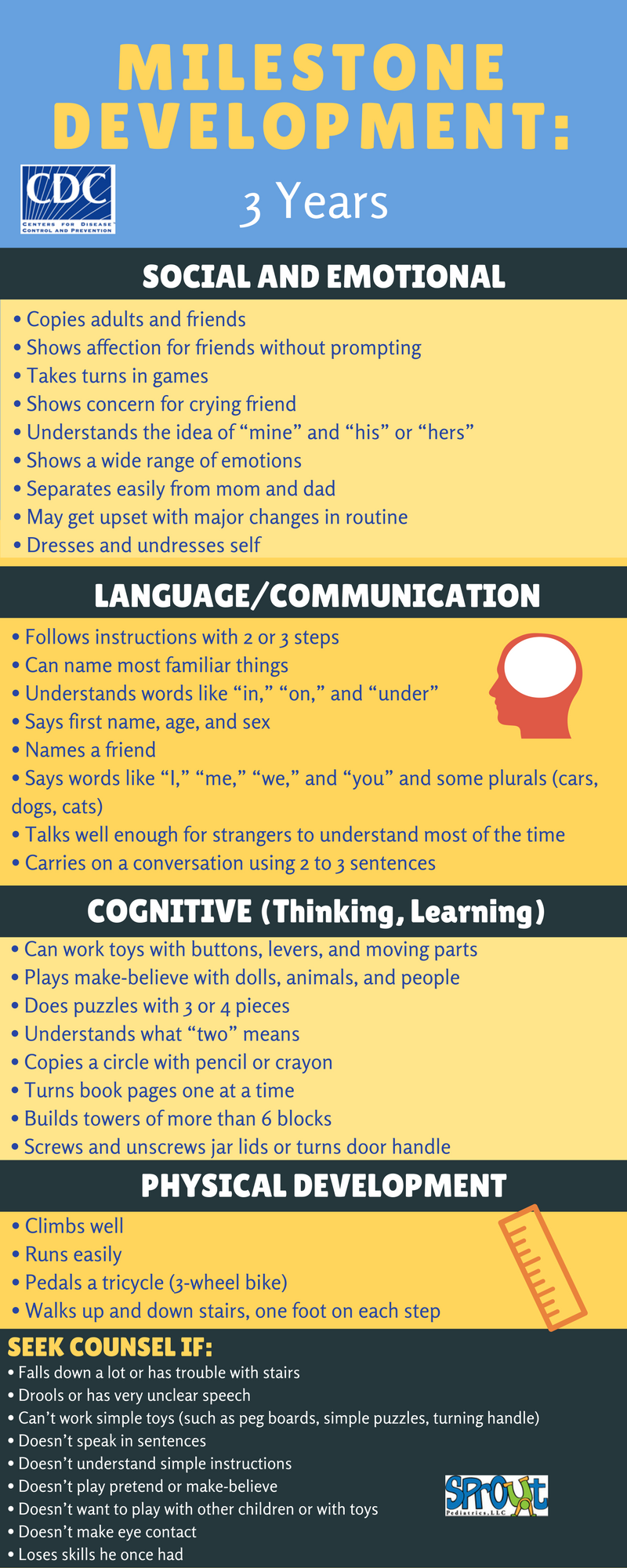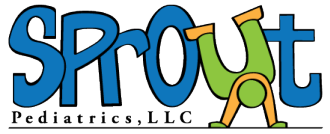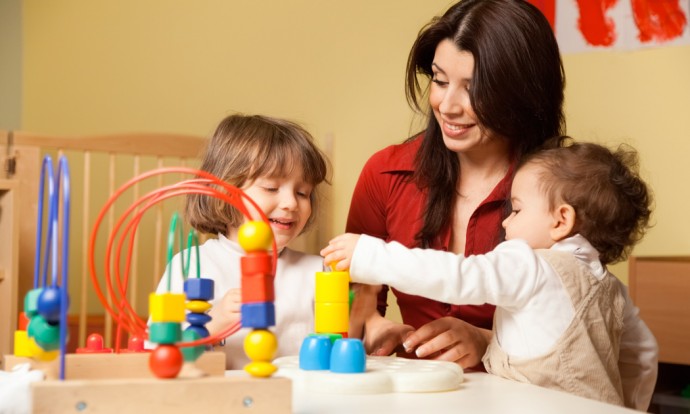3 Years Old – What most Preschoolers do at this age:
Social and Emotional
• Copies adults and friends
• Shows affection for friends without prompting
• Takes turns in games
• Shows concern for crying friend
• Understands the idea of “mine” and “his” or “hers”
• Shows a wide range of emotions
• Separates easily from mom and dad
• May get upset with major changes in routine
• Dresses and undresses self
Language/Communication
• Follows instructions with 2 or 3 steps
• Can name most familiar things
• Understands words like “in,” “on,” and “under”
• Says first name, age, and sex
• Names a friend
• Says words like “I,” “me,” “we,” and “you” and some plurals (cars, dogs, cats)
• Talks well enough for strangers to understand most of the time
• Carries on a conversation using 2 to 3 sentences
Cognitive (learning, thinking, problem-solving)
• Can work toys with buttons, levers, and moving parts
• Plays make-believe with dolls, animals, and people
• Does puzzles with 3 or 4 pieces
• Understands what “two” means
• Copies a circle with pencil or crayon
• Turns book pages one at a time
• Builds towers of more than 6 blocks
• Screws and unscrews jar lids or turns door handle
Movement/Physical Development
• Climbs well
• Runs easily
• Pedals a tricycle (3-wheel bike)
• Walks up and down stairs, one foot on each step
We recommend you seek counsel from your preschooler’s doctor if your child:
• Falls down a lot or has trouble with stairs
• Drools or has very unclear speech
• Can’t work simple toys (such as peg boards, simple puzzles, turning handle)
• Doesn’t speak in sentences
• Doesn’t understand simple instructions
• Doesn’t play pretend or make-believe
• Doesn’t want to play with other children or with toys
• Doesn’t make eye contact
• Loses skills he once had
This information was taken from the CDC’s website and meant to give you guidelines for development. For more information or if you are concerned, log onto the CDC’s “If You’re Concerned” website.


